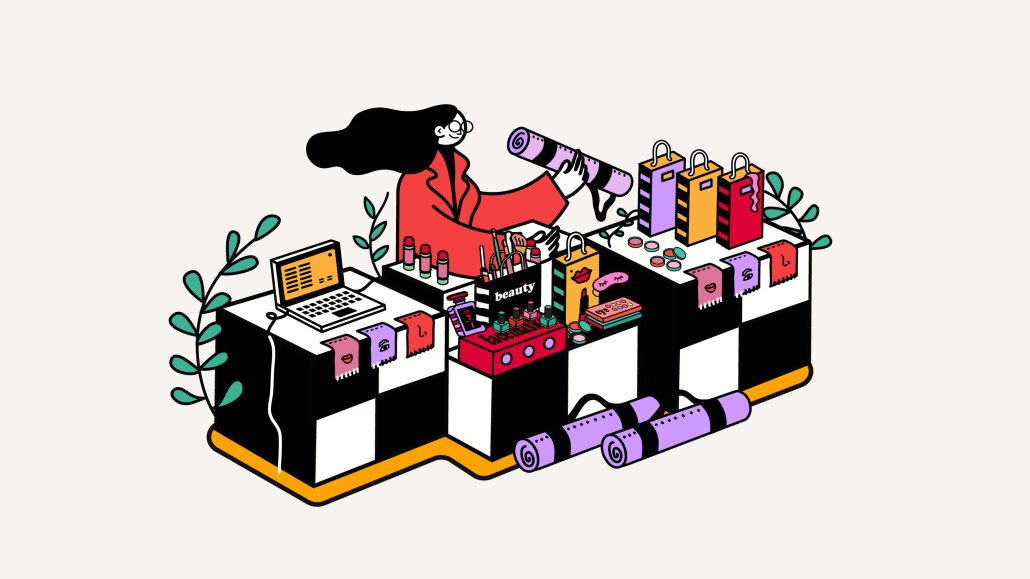Save 50% on a 3-month Digiday+ membership. Ends Dec 5.

Bespoke beauty formulations may sound like the stuff of science fiction, but if L’Oréal has things its way, it will soon become fact.
The reason: technologies people use to care for their appearance from the comfort of their home are crucial to the company’s direct-to-consumer ambitions. That’s according to Guive Balooch, the global vp running L’Oréal’s technology hub. While at-home beauty technology lacks the touch and expertise of a professional, it also opens an avenue for brands to create a direct relationship with the consumer, he said.
“More people are looking for services at home that combine digital but really deliver on the performance,” said Balooch. “People have realized they can get more than they originally anticipated from their at-home settings.”
Indeed, L’Oréal will launch two at-home beauty technologies in 2021. Normally, the tech incubator team launches one product a year.
The first is the L’Oréal Water Saver device for eco-friendly hair washing. The second is the “Perso” smart device that creates custom formulas for lipstick, foundation and skin care variants that users can also try virtually via an accompanying app.
“The app lets people see trends in real-time not only from influencers but also people who could become them should they come up with a popular shade,” said Balooch. “We hope the product, along with the app, acts as a lever to get people to be able to create and share their favorite shade and makeup with people from different cultures around the world.”
Eventually, L’Oréal wants to create a platform of sorts based on what users’ favorite influencers wear. As Balooch explained: “Ultimately, it’s a social community that can help people try trends without having to buy a product every time they see one they think they like without having to buy loads of them.”
Ad position: web_incontent_pos1
In other words, it’s a good way to drive recurring purchases for companies like L’Oréal. It expects 50% of its sales to come from online channels by 2023. For context, it took L’Oréal a decade to get to the point where 25% of its sales were made online.
Consumers crave a personalized experience, and at-home beauty offerings can meet these expectations, which drives brand loyalty. But it also opens up the opportunity to sell complementary products, said Jamie Johns, strategic client director at commerce software company Ordergroove.
“For example, some beauty tech requires face creams or face masks to function,” she continued. “Brands can sell the initial tech and then offer a subscription service to replenish the complementary product.”
The pandemic brought this shift into sharp focus for the beauty sector. With the end of the crisis still nowhere to be seen, its key for advertisers to pivot to at-home experiences without turning their backs on the professionals who’s access to consumers is either limited or prohibited in many markets now.
For example, L’Oréal recently announced Water Saver was actually originally designed to reduce water waste at salons; in conjunction, the business also introduced the at-home variant with the same tech. A few years ago, the at-home piece probably wouldn’t have been part of the equation.
Ad position: web_incontent_pos2
At-home tech, however, isn’t always a slam dunk, so brands have to be keenly aware of the marketplace and be agile when it comes to what they are providing.
“We are seeing more new beauty-tech apps starting to appear on the market as companies realize the increasing demand from ‘skintelligent’ consumers, looking with more focused tracking and the need for personalized, expert advice from the comfort of home,” said Olivia Alcorn, Digital Strategist at Foundation, the beauty-focused team in agency network Liberty Group.
More in Media

What publishers are wishing for this holiday season: End AI scraping and determine AI-powered audience value
Publishers want a fair, structured, regulated AI environment and they also want to define what the next decade of audience metrics looks like.

Digiday+ Research Subscription Index 2025: Subscription strategies from Bloomberg, The New York Times, Vox and others
Digiday’s third annual Subscription Index examines and measures publishers’ subscription strategies to identify common approaches and key tactics among Bloomberg, The New York Times, Vox and others.

From lawsuits to lobbying: How publishers are fighting AI
We may be closing out 2025, but publishers aren’t retreating from the battle of AI search — some are escalating it, and they expect the fight to stretch deep into 2026.
Ad position: web_bfu




